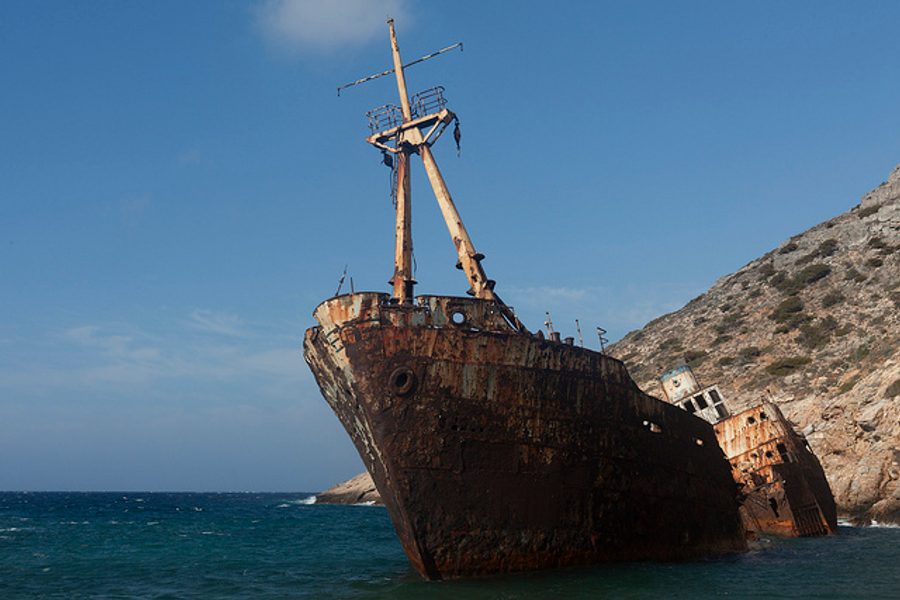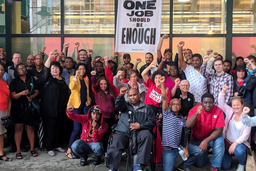
Search and rescue teams officially gave up hope yesterday after a failed five-day effort to locate 33 cargo ship workers lost at sea in the waters near the Bahamas. The sailors and other shipboard workers are presumed dead in the wreck of the U.S.-flagged commercial vessel El Faro, which disappeared October 1 in the high winds and heavy seas of Hurricane Joaquin.
The last voyage of the El Faro has already taken on the air of maritime mystery. U.S. Coast Guard teams were not only unable to locate any survivors, but are not even sure about the current location of the ship. U.S. Coast Guard Captain Mark Fedor stated officials believe it sank near its last reported position about 35 miles northeast of Crooked Island, the Bahamas, but the precise location has yet to be identified.
Among the lost seafarers are 28 members of the regular crew, all American citizens, and five Polish nationals, who had been hired as a temporary “riding gang” to do special maintenance work. They departed Jacksonville, Florida, September 29 for a regularly scheduled voyage to San Juan, Puerto Rico.
Another mystery has already been suggested by some family and friends of the crew: Were the deaths preventable?
The answer, according to the daughter of the Frank Hamm, who steered the ship, is yes. As reported in the New York Times, daughter Destiny Sparrow complains that the shipping company has not explained why the ship went to sea even though it was well understood that a dangerous storm was approaching. “That’s what I did not like! That makes no sense to me at all,” she said.
Sparrow’s concerns have been repeated by other family members who have been gathering all week at the Jacksonville hiring hall of the Seafarers International Union (SIU), the labor union that represented most of the American crew members Local television reports have conveyed the anguish of these relatives as they awaited news of the search at the SIU hall, but they have also revealed flashes of dismay and anger as some have wondered aloud whether the deaths may have been the result of carelessness or inattention from the shipping company.
Officials of the shipping company, TOTE Maritime, have already attempted to deflect these questions. In a press conference earlier this week, TOTE President and CEO Philip Greene told reporters that Captain David Wilkinson was not under any pressure to sail into dangerous waters. The company intends to cooperate fully with the investigations by the National Transportation Safety Board (NTSB) and by the Coast Guard — which, according to reports, has not yet begun its investigation but typically convenes a “Marine Board of Investigation” in cases involving multiple deaths.
Questions are also being raised about the seaworthiness of the El Faro, which the U.S.C.G. reports had lost engine power shortly before its disappearance.
NTSB and Coast Guard investigators ought to devote serious attention to the advanced age of the ship, and how that contributed to the loss, says Robert Frump, a former investigative reporter and author of Until the Sea Shall Free Them, a book on marine safety. The El Faro was constructed in 1975, he notes, meaning that it is 15 to 20 years beyond its expected commercial life span. Although there is nothing illegal (or even unusual) about operating older vessels, he says, there is good reason to worry about the safety of older ships. His book, for example, focuses on the 1983 sinking of the 39-year-old Marine Electric, an incident in which 31 seafarers died.
The similarities between the Marine Electric and El Faro, are striking, Frump continues. Both ships were operated by well-known, reputable ship owners with otherwise good safety records. Both were operated principally in U.S. waters under the provisions of the Jones Act, a maritime law that prohibits foreign ships from carrying cargo between U.S. ports. And both vessels were overaged as a result of commercial pressures on ship operators to squeeze additional economic life out of Jones Act ships, he says. And both suffered catastrophic accidents with major loss of life.
“The problem with old ships, of course, is that they are about as safe as old trucks. You can own an old pick-up truck and take really good care of it and you can run it around town every once in a while, and it looks great. But it is an old system and it is old equipment. It breaks down. And it usually breaks down when you don’t expect it,” he tells In These Times.
“There is a reason that United Parcel Service and FedEx don’t operate 40-year-old trucks on their routes. They are unreliable, they break down a lot,” he says.
Representatives of SIU and of American Maritime Officers, the union that represented the captain, mates and engineers on the El Faro, have made no comment on the safety issues being raised.







